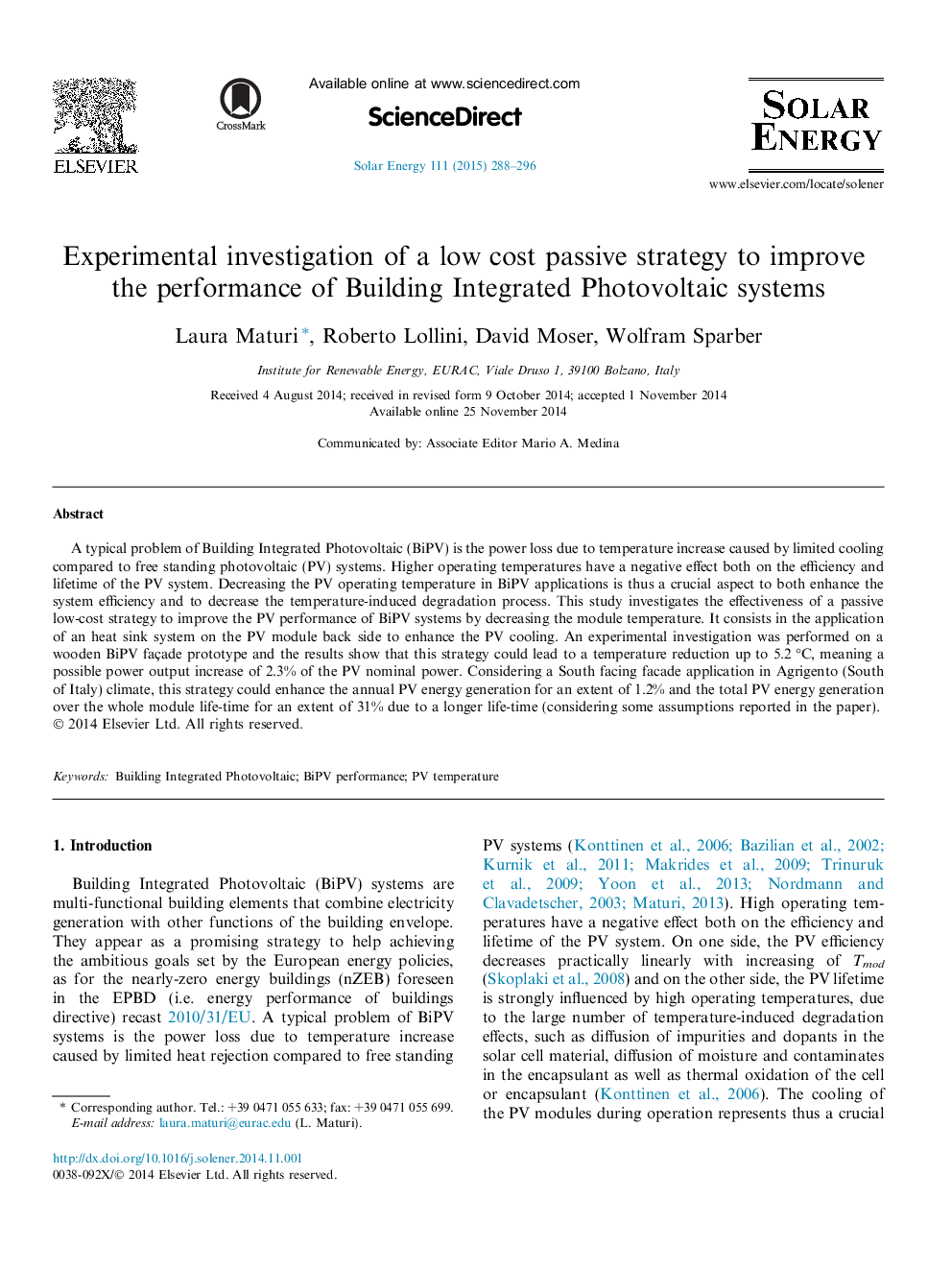| Article ID | Journal | Published Year | Pages | File Type |
|---|---|---|---|---|
| 1549814 | Solar Energy | 2015 | 9 Pages |
Abstract
A typical problem of Building Integrated Photovoltaic (BiPV) is the power loss due to temperature increase caused by limited cooling compared to free standing photovoltaic (PV) systems. Higher operating temperatures have a negative effect both on the efficiency and lifetime of the PV system. Decreasing the PV operating temperature in BiPV applications is thus a crucial aspect to both enhance the system efficiency and to decrease the temperature-induced degradation process. This study investigates the effectiveness of a passive low-cost strategy to improve the PV performance of BiPV systems by decreasing the module temperature. It consists in the application of an heat sink system on the PV module back side to enhance the PV cooling. An experimental investigation was performed on a wooden BiPV façade prototype and the results show that this strategy could lead to a temperature reduction up to 5.2 °C, meaning a possible power output increase of 2.3% of the PV nominal power. Considering a South facing facade application in Agrigento (South of Italy) climate, this strategy could enhance the annual PV energy generation for an extent of 1.2% and the total PV energy generation over the whole module life-time for an extent of 31% due to a longer life-time (considering some assumptions reported in the paper).
Keywords
Related Topics
Physical Sciences and Engineering
Energy
Renewable Energy, Sustainability and the Environment
Authors
Laura Maturi, Roberto Lollini, David Moser, Wolfram Sparber,
